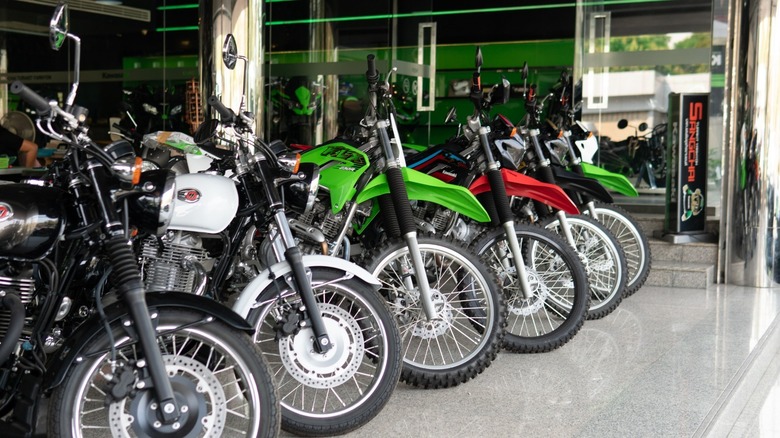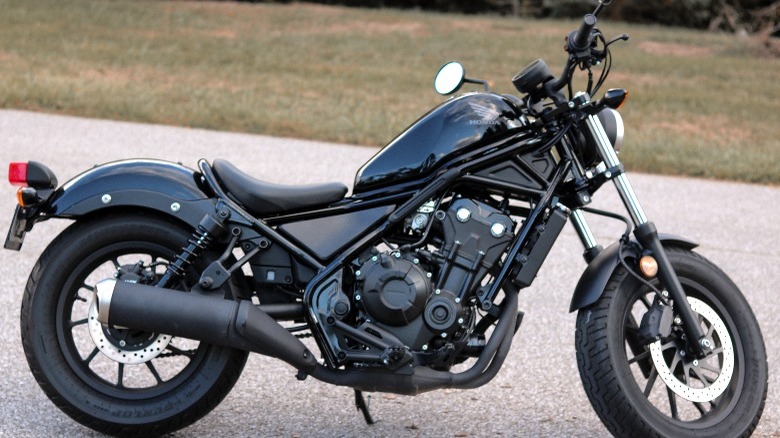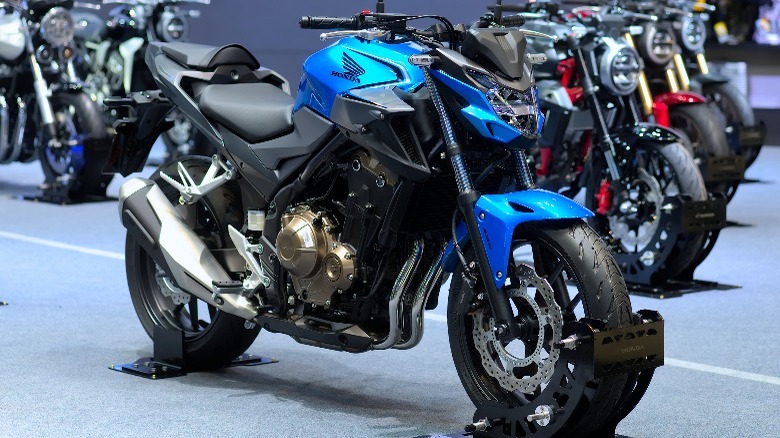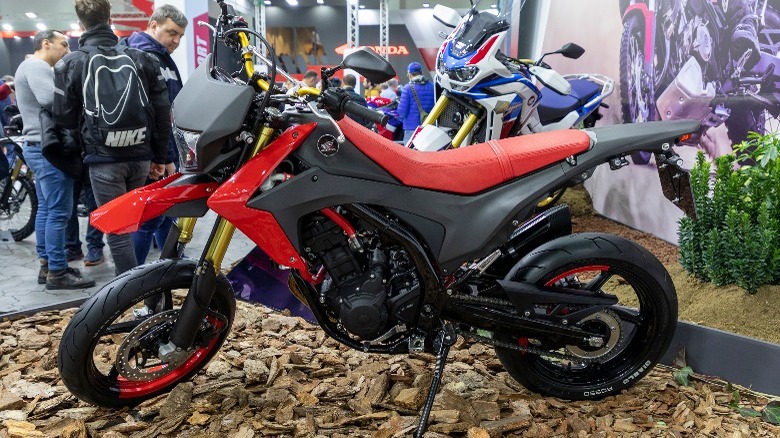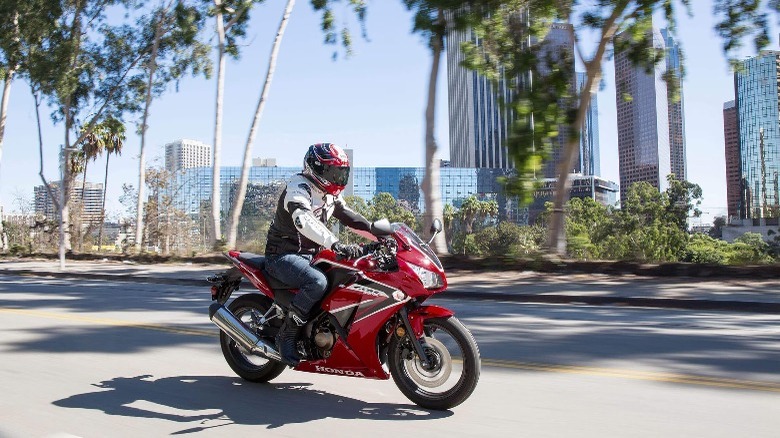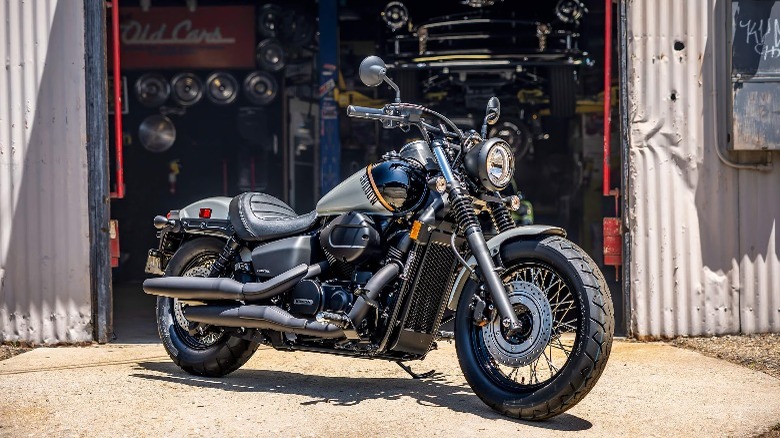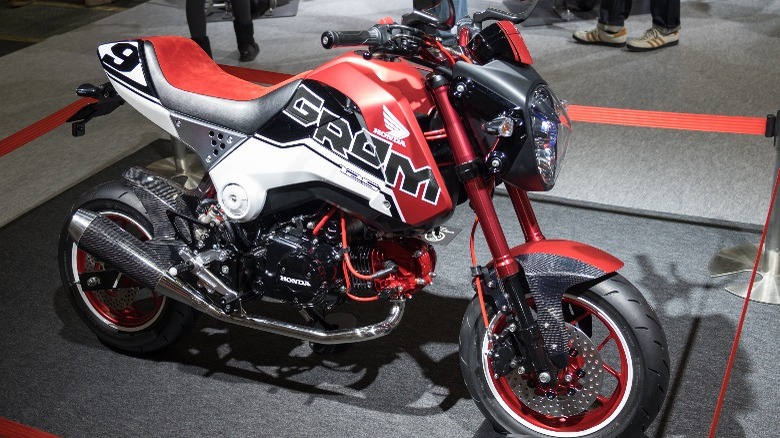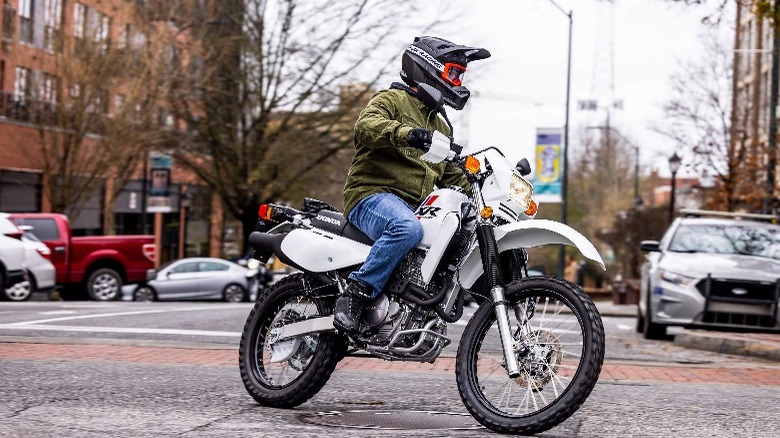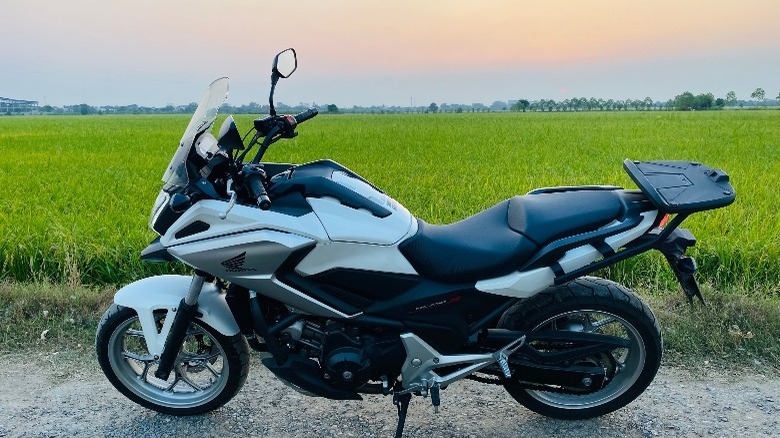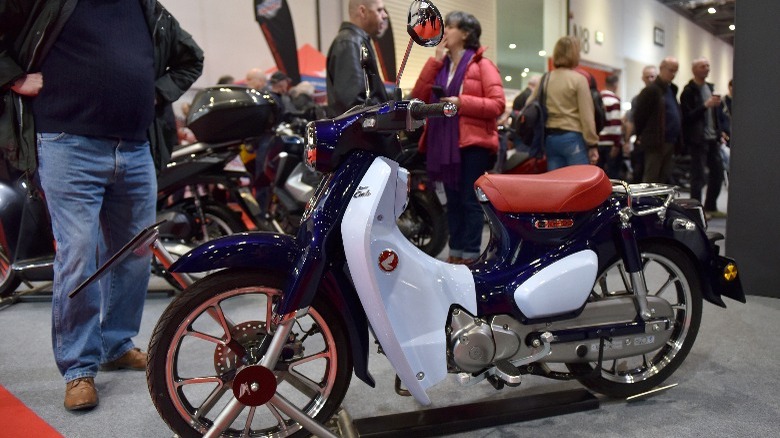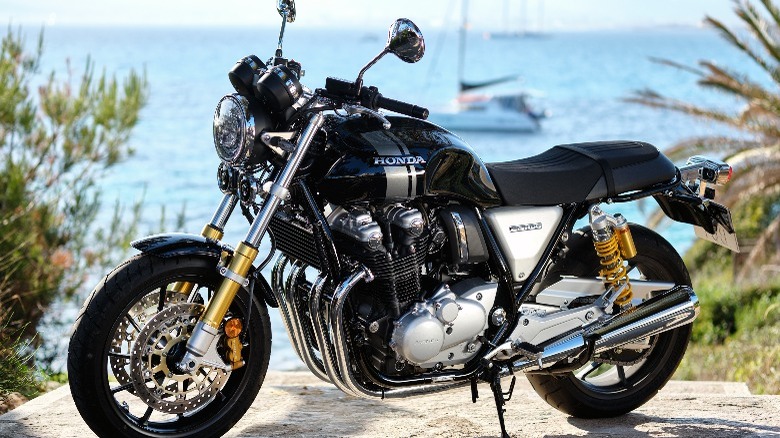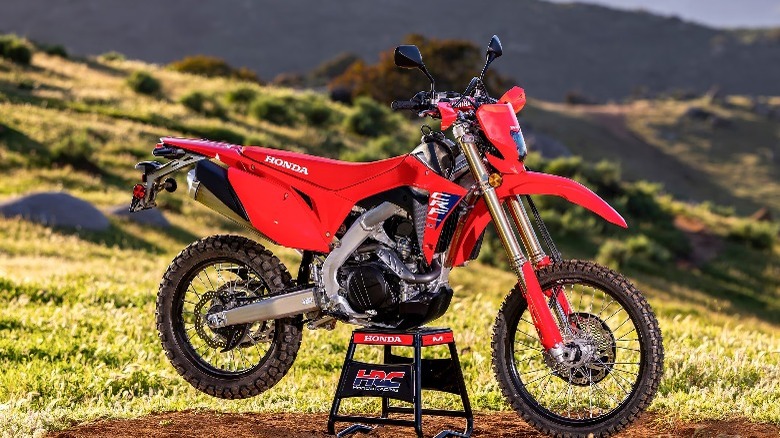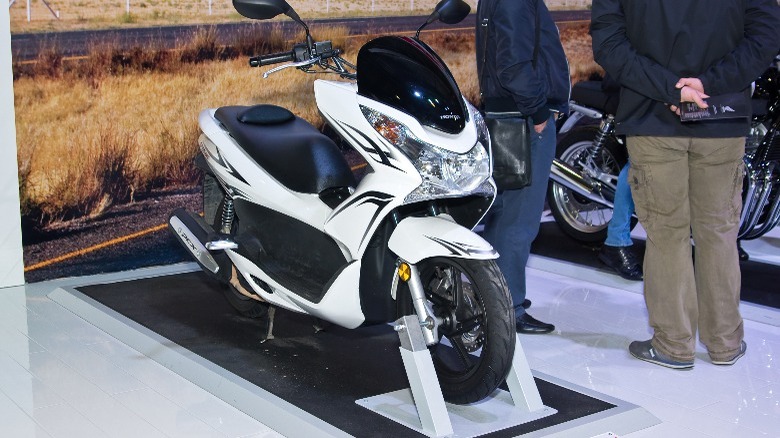12 Honda Motorcycles That Are Dirt Cheap To Maintain
Owning a motorcycle is much more than the thrill of the ride as such thrilling rides often come at a cost. We're not talking about the price of the motorcycle but instead the cost of maintenance. Motorcycle maintenance is an essential skill that all riders must learn because bikes require periodic maintenance that can be performed by the riders themselves to keep the cost of such maintenance to a minimum.
Hondas are already regarded as one of the most affordable cars to maintain, so it should come as no surprise that its range of motorcycles also meet this criteria. Since the Japanese manufacturers began producing motorcycles in 1949, they have had no shortage of reliable and affordable options on the market.
The cost of motorcycle maintenance is determined by various factors. The three most important are engine type, design or build quality, and fuel economy. Honda has excelled in all three areas because they are known for producing dependable and efficient engines.
Here are 12 Honda motorcycles that are dirt cheap to maintain.
Honda Rebel 500
Starting off our list is the Honda Rebel 500, introduced in 2017 as the newest model in its Cruiser class. The Rebel 500 is known for its simplicity and minimal maintenance needs, making it the perfect choice for beginners.
For this bike, oil changes, chain lubrication, and tire care top the list of its maintenance schedules. The first oil change is to be conducted within the first six months of use or after its first 600 miles, whichever comes first. Subsequent oil changes should be after every 4,000 miles.
Chain lubrication is also to be done every 600 miles and costs little or nothing as you can utilize used or leftover oil from the oil change. Tires on the other hand must be inspected before every ride to ensure that the pressure is within the recommended range of 29 and 36 PSI for the front and rear tires.
Honda CB500F
A fuel-efficient bike is an affordable bike to maintain, and this is why the CB500F makes our list. Honda introduced the CB500F in 2013. It is a naked sportbike with a 471cc parallel-twin engine, which produces approximately 47 horsepower. It is also part of a trio including the CB500X and CB500X. What sets this bike apart from the competition is a fuel efficiency of 90 mpg when averaging 55 to 60 mph.
Aside from this, the bike is also praised for its cheap maintenance as well as its easily accessible and affordable parts. The service interval for the Honda CB500F is once a year or every 8,000 miles, whichever comes first. For this, you will need fresh oil, a new oil filter, and an air filter. You may also require spark plugs, brake fluid, pads, and coolant. Depending on how heavy your usage of the bike is, this should put annual service costs below $250.
Honda CRF250L
Though the Honda CRF250L is renowned for its sportiness and capability to be ridden off-road as well as on-road, it would be incomplete to give an assessment of the bike without paying regard to its low maintenance costs. This motorcycle, which was produced between 2012 and 2018, earned acclaim for its lightweight and agile handling, which provided riders with great off-road riding experiences. It also has a reputation as one of the motorcycle industry's top-selling dual-sport models by a large margin.
The Honda CRF250L has a 4,000-mile oil change service interval. It is also vital to conduct chain maintenance every 600 miles by checking the drive chain lubrication and checking its slack for adjustment between the recommended measurements of 25 and 35 millimeters. It is also vital to check the tire pressure to ensure it is within the recommended range of 22 PSI for both the front and rear tires.
Honda CBR300R
The Honda CBR300R is another ideal motorcycle for entry-level riders. This is in part due to its size which offers reliability and lower overall running costs. The Honda CBR300R was introduced in 2011 as a lightweight sport bike. Though ideal for beginner riders, the bike also poses a great option to those looking for an efficient and fun ride thanks to its balanced offering of performance, affordability, and ease of use.
It is easy to be fooled that this motorcycle, being a lightweight, lacks a burst of power. This is not true, as the CBR300R replaced the CBR250R and features a 286cc liquid-cooled single-cylinder, four-stroke engine that produces an increased 30 horsepower with a possible top speed of 100 mph.
The Honda CBR300R has an 8,000 mile service intervals between oil changes but it does not require a filter change every oil change. Chain maintenance is, however, still the standard 600-mile interval for lubrication and adjustments with a recommended slack of 50-55 millimeters.
Honda Shadow Phantom
The Shadow Phantom is a super cool name to give a motorcycle but this motorcycle has shown that it is a name that is well-earned. The bike was initially introduced as the Honda Shadow in 1983 and is a cruiser regarded as one of the most successful Honda motorcycles ever.
There are two that make the Shadow Phantom Cruiser a budget-friendly bike to maintain. First is its durable 14.6 liter 745cc liquid-cooled, 52-degree, V-twin four-stroke engine that produces approximately 45 horsepower. Second is its simple classic cruiser design style, making things easy for DIY mechanics.
The Shadow Phantom has a shaft final drive instead of a chain drive, removing the need for lubrication and adjustment. However, another area riders should pay attention to is the engine's valve clearance check, which comes up every 8,000 miles. The valves also come with screw and locknut adjusters.
Honda Grom
Introduced in 2014, the Honda Grom is a reputable motorcycle that is as affordable as it is popular. It also unsurprisingly featured on our list of Honda's most affordable motorcycles. It is a compact motorcycle with a six-liter, 125cc air-cooled, single-cylinder, four-stroke engine as its heart. The Grom provides an easy, fun ride for both beginner and experienced bikers.
With its cheap MSPR of $3,599, the Honda Grom has an abundance of replacement parts on the market and this accessibility substantially impacts its maintenance costs in all the right ways. The service interval of the Grom is every 4,000 miles. The 2023 model has an mpg rate of 166.5 but only has a fuel capacity of 1.6 gallons, meaning you will need to stop and refuel often for long rides.
The Grom is a very cheap bike to maintain if used properly. Riders should ensure it is clean at all times, especially after riding it on wet or dusty roads. This is because dirt buildup may affect the chain's functionality and water may cause its parts to corrode.
Honda XR650L
Like the CRF250L, the Honda XR650L is a rugged motorcycle known and built for its dual-sport capabilities, particularly its suitability for off-road conditions. The bike entered the market in 1992, providing a simple yet reliable option that is inexpensive to purchase and maintain.
The XR650L is powered by a 10.6-liter, 644cc air-cooled, single-cylinder, four-stroke engine that produces up to 40 horsepower and can reach a top speed of 100 mph. It also features a long-travel suspension of about 11 inches and nimble handling mechanics that allow it to adapt to rough terrain easily.
The bike has aftermarket appreciation for its potential to be customized to suit any rider's specific wants. It has a service interval of 2,000 miles or six months, primarily for oil changes and chain maintenance, which is easy enough for DIY mechanics. Additionally, its fuel economy of 52 mpg for the 2024 model earns it a reputation for having a low total cost of ownership.
Honda NC750X
Next on our list is the Honda NC750X, an adventure-style bike introduced in 2014 with a reliable, fuel-efficient engine requiring minimal upkeep. This motorcycle is powered by a 745cc liquid-cooled, parallel-twin, four-stroke engine that generates a horsepower of 54 that can reach a top speed of 110 mph. The bike also comes with a 6-speed manual or Honda's Dual Clutch Transmission (DCT), giving riders the best of both worlds.
The NC750X was created with practicality at its core, which is why it is so cheap to maintain. From the already discussed transmission to its fuel economy of 28.6 km/l, as well as its capacity to go 8,000 miles before service is needed, it is clear Honda designed this bike for riders who want a versatile bike that can handle daily commuting and long-distance touring. Overall, riders have reported an ease of conducting services on their own, even with professional assistance costing very little.
Honda Super Cub C125
The Honda Super Cub C125 is a classic mini motorcycle known for its durability and extremely low running costs. With a four-stroke single-cylinder engine at its heart, the Super Cub can function with little financial upkeep.
Conceived over six decades ago, in 1958, the Honda Super Cub was introduced as a means of tapping into the popularity of lightweight bikes and mopeds at the time, a goal that it succeeded in doing. Today, the bike is reputed as one of the most produced motorcycles in not just Honda history but also motorcycle history, surpassing 100 million units.
As you might have guessed, this popularity makes it easy to find replacement parts on the market for cheap. Even with modern updates through generations, the Super Cub retains its simplistic engineering and design that makes it easy for riders to perform maintenance tasks for themselves as long as they adhere to the schedule and guidelines.
Honda CB1100
Initially produced in 2010 for Japan only, the Honda CB1100 was brought to Europe and North America three years later. This retro-styled bike was produced as a homage to the Honda CB series motorcycles that graced the roads in the 1970s. It features modern engineering and offers a reliable 1,140cc air-cooled, inline-four, four-stroke engine that produces a whopping 89 horsepower and can reach top speeds of 125 mph.
This engine design significantly contributes to its easy maintenance, which mostly consists of oil changes every 8,000 miles. The chain must however be lubricated and adjusted every 600 miles with a target slack of 25 to 35 millimeters. Further, you must inspect the tires before every ride to ensure they are within the recommended pressure of 36 psi for the front tires and 42 psi for the rear ones.
Annual servicing costs start at about $200 with professional help, but with the right direction, you can do this for yourself to save further.
Honda CRF450L
The CRF450L is the penultimate model on our list and the third dual-sport bike at that. This motorcycle was designed with maintenance in mind, as it features simplicity and reliability that make it affordable in the long run. A more modern entry on our list, the CRF450L only emerged in 2018. It has, in that time, earned a name for itself thanks to its agility and high performance.
Being specially designed for off-road riding means that the Honda CRF450L is high maintenance, but only in terms of devotion and not necessarily financial. It has a relatively short service interval of 600 miles with spark plug replacement and valve clearance checks to be conducted every 1,800 miles.
These tasks, amongst others such as chain maintenance, are simple to complete if you are a DIY mechanic using the right tools and following the correct guidelines. However, you should note that the bike requires a major engine strip down and rebuild after 20,000 miles, so this may require a more professional touch.
Honda PCX150
Renowned for its exceptional fuel efficiency, the Honda PCX150 was introduced in 2009 as a scooter that combines ease of use with low maintenance requirements. This motorcycle is great for driving in the city as it boasts superb reliability and performance metrics. At its heart is a 156.9cc, liquid-cooled, single-cylinder, four-stroke engine that powers its 290-pound modern, sleek, and compact frame.
The PCX150 is one of the most fuel-efficient motorcycles around today with an economy of about 100 miles to the gallon. Fuelling is not the only reason this bike ranks high for cheap maintenance. It also has a Continuously Variable Transmission (CVT) that requires less frequent maintenance than traditional manual transmissions, as its lack of gearing makes it easier for the bike to maintain its required torque ratio, all the while providing a smooth ride. Furthermore, its lightweight and simple design makes it easily accessible to mechanics, especially riders who opt to conduct maintenance tasks for themselves.
